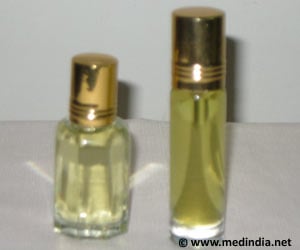Are your gym clothes still smell like sweat? Don't worry, new fragrance-releasing cotton fabric can emit a lemony citronella aroma upon contact with sweat and help get the stink out of your workout clothes.

‘Are you wondering how to get sweat smell out of your gym clothes? Check this out, a new modified cotton fabric that emits a lemony citronella aroma upon contact with sweat can help neutralize sweaty gym clothes.’
Read More..




In recent years, scientists have developed smart fabrics that react to stimuli such as light, temperature or mechanical stress and respond in certain ways, such as by changing color or conducting an electrical signal. Researchers have also explored different methods to release fragrances from fabrics. Carla Silva, Artur Cavaco-Paulo and colleagues wanted to develop and compare two new strategies for releasing a fragrance -- β-citronellol, a lemongrass-derived scent used in some insect repellants -- from cotton fabric in response to sweat. Read More..
The first approach involved an odorant-binding protein (OBP) found in pigs' noses that binds to β-citronellol and other scent molecules. To the OBP, the researchers attached a protein domain, called a carbohydrate-binding module (CBM), that binds to cotton.
In their second strategy, the researchers packaged the fragrance in liposomes that displayed CBMs, which anchored the lipid carriers and their cargo to the fabric. The team exposed the modified cotton fabrics to an acidic sweat solution, and the low pH of the simulated perspiration caused the OBP and liposomes to release β-citronellol.
Comparing the two strategies revealed that the OBP released a quick burst of scent, while the liposomes showed a slower, controlled release. The liposomes could also hold more fragrance than the other approach. The two strategies could prove useful for different clothing applications, says the research team.
Source-Eurekalert











